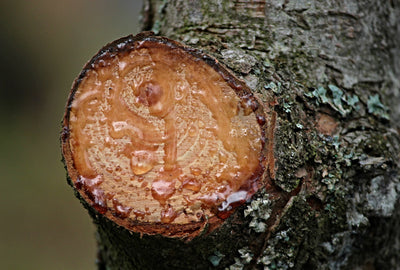Polypropylene: Your comprehensive guide to the world of versatile plastics
One day in our life and we come into contact with countless materials. One of them is polypropylene (PP). Although this word rarely appears in everyday conversation, the presence of this material is omnipresent in our lives . From the packaging of your morning cereal to the toothbrush that helps you brush out every last crumb, this polymer is everywhere. So, let's delve deeper into this world of the invisible hero.
Basics of Polypropylene: A behind-the-scenes look at the invisible superhero
What is PP?
Polypropylene, often abbreviated as PP , is a thermoplastic polymer. In the world of materials science, "thermoplastic" means that it can be deformed when heated and retain its new shape when cooled. Think of an ice cube that melts in a hot pan and then refreezes in the cold - except in our case, after melting, the material is reshaped.
The chemistry behind it
The chemical structure of PP is fascinating and gives it its unique properties. It's a polymer, meaning it's made up of a series of smaller units called monomers that join together to form a larger chain. In the case of polypropylene, these monomers are propene molecules.
Each propene molecule consists of three carbon atoms and six hydrogen atoms. One carbon atom forms a double bond with the other two while the remaining bonds are formed with the hydrogen atoms. In the polymerization reaction that produces polypropylene, the double bond is broken and the individual propene molecules combine to form long chains.
These chains can be hundreds, thousands, or even millions of units long, giving the material its strength. But the chains don't just lie next to each other, they can also tangle and branch, making the material even more resilient.
How is PP made?

The production of this material is a process called polymerisation. Many small propene molecules combine to form a long chain under the influence of heat, pressure and a catalyst.
This process begins in a reactor into which propene gas is fed together with a catalyst. The heat and pressure in the reactor causes the double bonds in the propene molecules to break and form new bonds with the neighboring molecules, creating a long chain.
The freshly formed polypropylene is then removed from the reactor and must be cooled and dried before it can be further processed. Drying is necessary to remove any residue of unbound propene and other by-products.
After drying, the PP can be processed into granules, which can then be molded into a variety of products. The specific shape and structure that the polymer takes depends on the specific processing conditions and additives added.
Properties of polypropylene: A hidden chameleon among materials
Strength and rigidity
This polymer is a real powerhouse . Its high strength and rigidity make it resistant to mechanical impact, which means it doesn't break or tear easily. These properties result from its chemical structure: the long, branched polymer chains form a robust network that distributes mechanical stress and keeps the material in shape. This makes polypropylene an ideal choice for a wide range of applications, from heavy-duty packaging to durable automotive parts.
Chemical resistance
Like a brave knight defending itself against enemy attacks, PP resists many chemicals and solvents. Acids, bases, alcohols and even many organic solvents have little effect on the material. This makes it perfect for applications where the material comes into contact with such substances - think for example containers for detergents and disinfectants or medical instruments.
Heat and cold resistance
A chameleon among materials, PP also displays impressive thermal properties . It can withstand temperatures of up to 160 degrees Celsius without losing its shape - and is even freezer safe to a certain extent. That optimizes it for applications ranging from microwave dishes to refrigerator containers.
Transparency and color options
Polypropylene is naturally clear but can be dyed any color depending on the application and needs . With the addition of colorants or fillers during the production process, manufacturers can create products in an almost infinite variety of colors and textures.
Recyclability and environmental aspects
Last but not the least, PP also shows an eco-friendly side. It is fully recyclable and can be reused multiple times without significant loss of quality. Reusing PP can help reduce the environmental impact of plastic waste and contribute to sustainable material use.
Applications of the polymer: The invisible helper in all situations
Packaging Industry: The Protector

In the packaging industry, PP is an invaluable ally . Thanks to its strength and flexibility, it is used for a variety of packaging materials including plastic films, bottles and containers. It protects groceries from contamination, keeps medicines safe and helps your online orders get to you intact.
Automotive industry: The easy tools

In the automotive field, it is valued for its combination of lightness and strength. It is used for a variety of parts from bumpers to dashboards to interior components. The use of polypropylene helps reduce vehicle weight, which in turn reduces fuel consumption and CO2 emissions.
Medical Applications: The inconspicuous lifesaver
The polymer also provides important services in medicine. It is used for a wide variety of applications including syringes, prostheses, artificial organs and packaging for medicines. The high chemical resistance and the ability to sterilize it make polypropylene ideal for these applications.
Textile industry: The cuddly companion
PP is also a major player in the textile industry. It is used to make everything from carpets to technical textiles to outdoor clothing. Due to its low moisture absorption and good thermal insulation properties, it is predestined for these applications.
Construction: The indispensable foundation

Polypropylene also plays an important role in construction. It is used for pipes, insulation material and even protective equipment on construction sites. Its strength, weather resistance and ease of use are plus points in relation to these tasks.
Processing with the Mr Beam laser cutter

And last but not least, when it comes to PP editing, the Mr Beam laser cutter is a real game changer. It allows you to precisely cut and engrave polypropylene to create custom designs and prototypes. In orthopedic technology, the laser cutter is also very useful for cutting plastics .

Pros and cons of Polypropylene: A realistic look at our material
The advantages of the chameleon
One of the biggest advantages of the material is certainly its low weight. This property makes it ideal for applications where every gram counts, such as in the automotive or aerospace industries. Polypropylene's light weight helps reduce energy consumption and minimize environmental impact.
Another advantage is its high chemical resistance. Whether it's acids, bases or solvents, the polymer will withstand making it ideal for medical devices, chemical containers and other applications where the material is exposed to harsh conditions.
The low water absorption of PP is also a big plus. It does not swell or deform in a humid environment, making it ideal for use in wet rooms, swimming pools or for outdoor textiles.
Finally, the low manufacturing costs are an important advantage. PP is a cheap material, making it a cost-effective choice for a wide range of applications, from packaging to single-use products and components for various industries.
The hero's dark side
Despite all the advantages, polypropylene also has some disadvantages. A major disadvantage is its low UV resistance. Prolonged exposure to direct sunlight can cause it to become brittle and lose its color. Therefore, it often needs to be treated with UV stabilizers when used for outdoor applications.
Another disadvantage is its lower impact strength compared to some other polymers. While polypropylene has good tensile and compressive strength, it is less able to withstand sudden or high loads without breaking or tearing.
Care and handling: How to get the most out of your material
Maintaining polypropylene is easy. It can be cleaned with soap and water or most common cleaning products. There are no special regulations for the storage and handling of PP. However, it should be protected from prolonged exposure to the sun to prevent the material from becoming brittle.
Recycling and environmental issues: Polypropylene and the green question
This polymer can and should be recycled: the material is thermoplastic, which means that it can be reliquefied by heat and formed into new products. This process can be repeated several times without the material losing its basic properties. However, the effective collection and sorting of PP for recycling is a challenge and an area that needs continuous improvement. In terms of environmental impact, PP presents a mixed picture: on the one hand, it has the potential to be a sustainable option due to its durability and recyclability. On the other hand, its widespread use and often careless disposal behavior contributes to global plastic pollution, a problem we urgently need to address.
Future Developments and Trends: The Way Forward
- Current research in the field of polypropylene focuses on improving material properties, for example by developing high-performance grades with increased heat and impact resistance
- In the field of processing technologies, work is being done on more efficient and sustainable production methods that reduce the environmental impact and improve recyclability
- New areas of application for PP are opening up as a result of miniaturization in electronics and advances in medical technology
- In the packaging industry, innovations are driving the development of thinner, lighter and at the same time strong polypropylene packaging
- The increasing demand for sustainable solutions encourages research on bio-based PP and chemical recycling methods
- Technological advances, such as in 3D printing technology, are constantly expanding the possibilities and areas of application of the polymer
Conclusion: Polypropylene - an invaluable partner
Although polypropylene is a material that we rarely pay attention to in everyday life, it plays an important role in many areas of our lives. Its versatility, strength and cost-effective manufacturing make it an invaluable partner. Looking to the future and ongoing research, it has the potential to be encountered in many more areas.
So there you have it - your comprehensive guide to the world of versatile polymer! And remember, the next time you pick up your toothbrush or open your microwave - you're dealing with an invisible superhero named Polypropylene.



